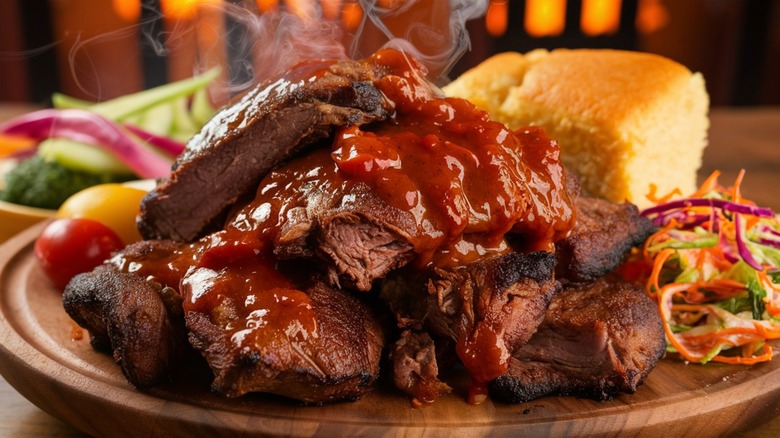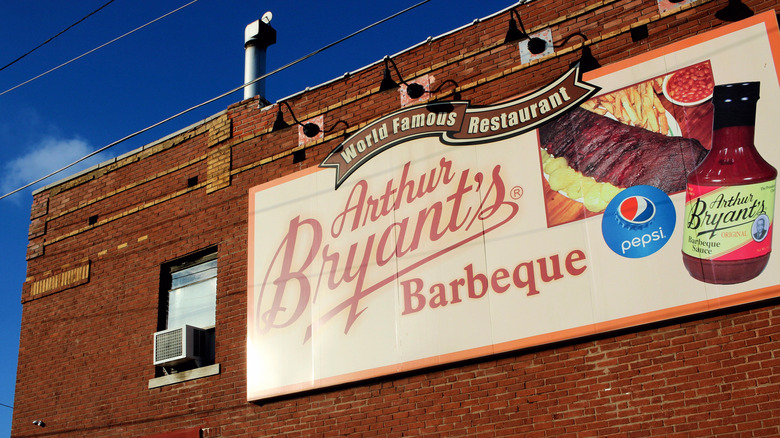Who Invented Kansas City Barbecue?
Kansas City barbecue venues run the smoky gamut, from gas station 'cue to slow-smoked burnt ends, woodfire grilling, lawn or patio bbq joints with live blues, and even a vegan-friendly KC barbecue featuring smoked jackfruit. At least 100 eateries in the metro area dish up its famous namesake barbecue, with individual pitmasters adding their own tweaks and touches. Truly understanding the evolution of KC barbecue requires a look-back machine, tumbling 100 years in reverse to a streetside alley cart in the city's Garment District.
The man behind the KC 'cue curtain was Memphis-born Henry Perry, who journeyed up and down the Mighty Mississippi, earning his keep by toiling in steamboat kitchens. He eventually planted roots in Kansas City in 1907, launching a business that has gone down in smoked-meats history. His slow-smoking techniques became a signature component of Kansas City barbecue, as did the penchant for smoking a wide variety of meats, a practice made easy by the city's evolving meat-packing industry.
As the 1920s and 30s roared to life in Kansas City, Perry moved his operation into a streetcar trolley barn at 19th and Highland, where he doled out his hot smoked meats, wrapped in newspaper, for 25 cents per serving. The Black American community was thriving in the area, where KC jazz, arts, sports, and barbecue defined generations to come. Perry's place was a crucial part of the scene, and the descendants of his pitmaster protégées still serve up heaping helpings of 'cue in the neighborhood to this day.
KC barbecue: the meat, the wood, and the sauce
While specific meats routinely feature in regional barbecue styles, Henry Perry wasn't shy about smoking up alternative proteins. In addition to beef, he's known to have served other then-acceptable options, including possum, raccoon, and even woodchuck. Don't expect that in modern-day Kansas City barbecue, which is more likely to be standard pork, beef, or poultry, heavily accented by the wood it's smoked in. Some KC pitmasters still insist that authenticity requires oak and/or hickory, which was Perry's go-to fuel source.
The thick, tomato-centric sauce of KC 'cue evolved over time, gradually incorporating the now-defining flavors of molasses and/or brown sugar, black pepper, and spicy or sweet tweaks per individual chefs. That includes Perry's apprentices who branched off into their own barbecue ventures, such as Charlie Bryant, who inherited Perry's business after he passed away in 1940. It was Bryant's brother, Arthur, who tempered the original sauce and added the unique sweetness of Kansas City barbecue sauce. Bryant's Barbecue still serves its iconic meats and sauces to new generations of 'cue devotees today.
Many regions tout their barbecue bonafides, and rightfully so. But Kansas City, Missouri, consistently ranks as one of America's best in the barbecue kingdom. The nonprofit Kansas City Barbeque Society thrives with more than 16,000 members and sanctions 400 worldwide barbecue contests. Per the society's mission statement, it considers barbecue a "culinary technique, sport, and art form." Chef's hats off to Henry Perry for his irreplaceable KC contribution.

